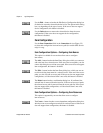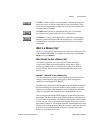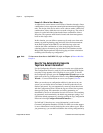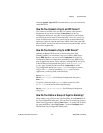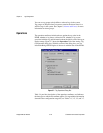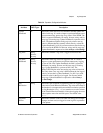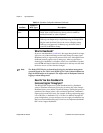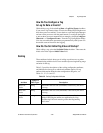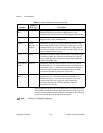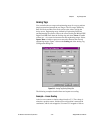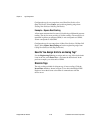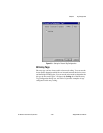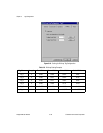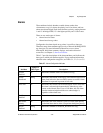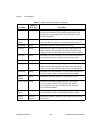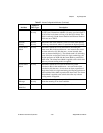
Chapter 3 Tag Configuration
BridgeVIEW User Manual 3-26 © National Instruments Corporation
The next sections explain how to scale data. Often your application needs
BridgeVIEW to manipulate the raw data used in the device server to put it
in a form, called engineering units, suitable for the operators. The following
sections describe the options for individual data types.
Note There is no scaling for string tags.
Eng Zero
Scale
analog Determines the zero scale (minimum) value used by the
BridgeVIEW Engine and the user application for a tag.
Engineering Zero Scale must be less than Engineering Full Scale.
Units analog Determines the engineering units for a tag. Examples include
degrees Celsius, liters, and kilograms.
Scaling analog,
discrete,
bit array
Determines the type of scaling algorithm to be used for a tag.
The scaling methods differ according to tag data type. You can
configure analog tags for linear or square root scaling, discrete
tags for invert scaling, or bit array tags for mask scaling. All tags
can be configured for no scaling.
Coerce analog Determines whether to coerce data so that it is valid for the target.
If scaling to output, the value must be within the raw (device
server) range. If scaling to input, the value must be within the
engineering (HMI) range.
Scaling Invert
Mask
bit array Determines which bits are inverted for a bit array tag. Bits in
the mask that are
1
are inverted; bits that are
0
are not inverted.
The default mask is
0
, indicating none of the bits are inverted.
In bit-wise logic terminology, the Engine performs an XOR
with the Invert Mask to produce the scaled value.
Scaling Select
Mask
bit array Determines which bits are used for the bit array tag. Bits in
the mask that are
1
have their values passed through to the
RTDB; bits that are
0
are set to zero, regardless of the value
received from the server. In bit-wise logic terminology,
the Engine performs an AND with the Select Mask to
produce the scaled value.
Table 3-5.
Scaling Configuration Attributes (Continued)
Attribute
Applies to
Data Types
Description



